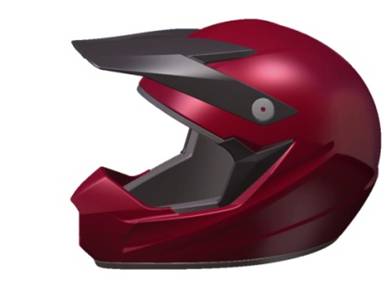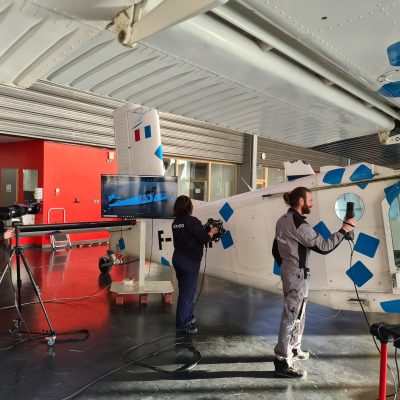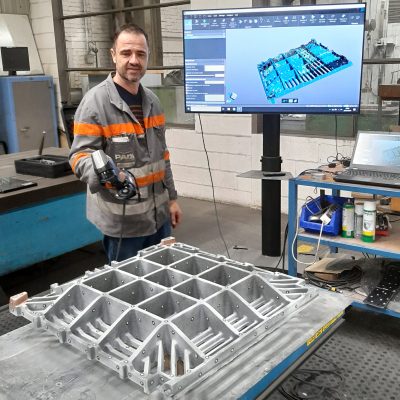April 30, 2024
Electrifying an Aircraft Using 3D Scanning and Augmented Reality See the articleI worked on a project where the client asked for a CATIA V5 file to start up the production of his product – a crash helmet. I found this project very interesting, because it called upon various skills of a CAD specialist like myself – reverse engineering, styling and the master of a product’s technical aspects.
To begin with, the client gave us a mock-up of the helmet, which we scanned to get a .STL file. Based on that file, I reconstructed the style surfaces in CATIA V5, based on some constraints such as the appearance of the surfaces, the reflects that they generated and the compliance to the .stl file. Compliance to these constraints was mandatory, as it impacted the final result directly, and therefore, the finished product. Besides, I had to be very careful when executing this first step, as it was crucial to the smooth conduct of the whole project.
Following that, the client sent a series of modifications to the helmet’s design (which he kept doing throughout the whole project). My job was to retranscribe all the styling changes required by the designer into my file – the tricky part, because you need to gauge the feasibility level of such modifications and identify potential issues they could lead to. Still, I felt like this was the best part of the project, because I had some freedom and could use my imagination (while staying in line with the designer’s stylistic intention, of course)! 
The last part of the project was to design the helmet’s various technical parts. This step was no walk in the park – I sometimes had to touch up the exterior design locally (by making stylistic propositions) in order to adapt it to the various technical choices made by the client.
In the end, I succeeded in delivering a complete, CATIA V5 assembly to the client, comprised of the helmet and its various components. In hindsight, this project was very rewarding to me, because it called on my various skills and allowed me to mix styling and reverse engineering with the more technical aspect of designing the surrounding parts.








12 Jun '13
Rigo
Very nice work. I'm working on a helmet on SolidWorks though, I can't seem to build the basic shape as it is not really round, more like an oval, maybe you could shine some light on how you got the basic shape? Thanks!
14 Jun '13
Isabelle Roy
Hello Rigo, In fact, we got the basic shape by doin a surface reconstruction based on a mock-up provided by the client. That mock-up wasn't round, as the global shape of an helmet is not based on a sphere Steps: 1 : clay mock-up created and provided by the client 2 : 3D scanning of the mock-up 3 : Reverse engineering of the mock-up 4 : Modifications in order to "play" with the styling lines so to bring the basic shape to the final design. Hope this helps! ;-)